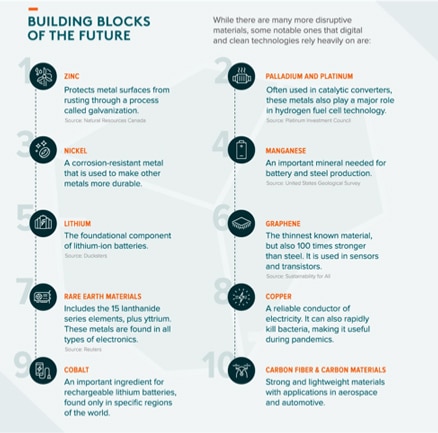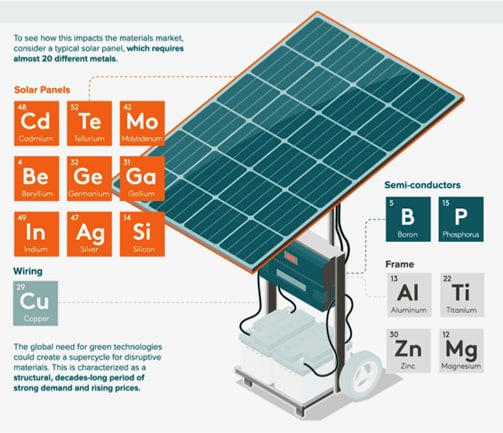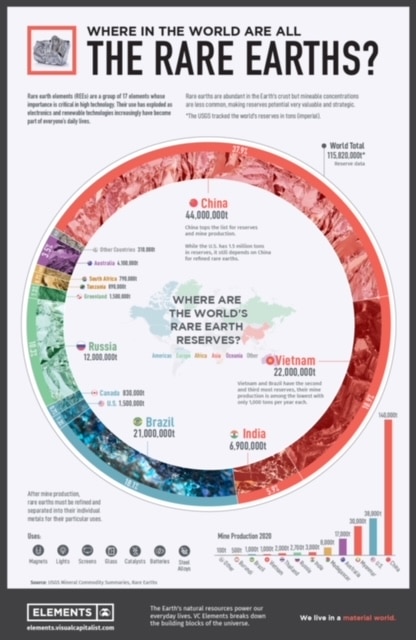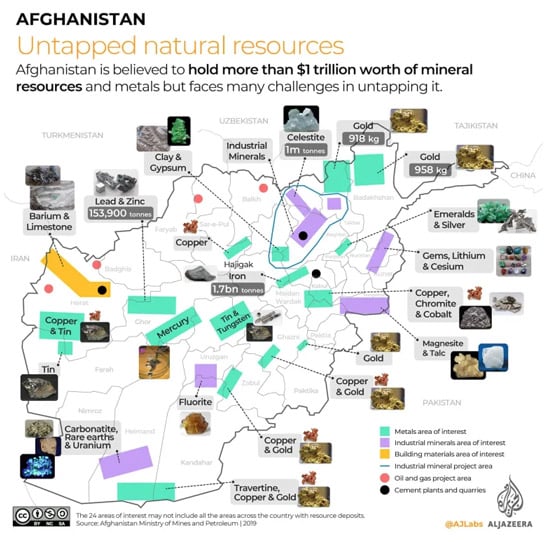Afghanistan is rich in natural resources. This has led countries like China and the EU to consider political recognition of the Taliban. However, the path to extracting these resources will be long and fraught with risks.
China's Interest in copper
Afghanistan and the Taliban have long spoken positively about China. In September 2023, China responded by appointing a new ambassador in Kabul, bringing China closer to formally recognizing the Taliban as the legitimate rulers of Afghanistan. If this happens, it would be the first country to do so since the Taliban took power in 2021.
China stated that one of the embassy’s roles would be to ensure cooperation in copper mining. Copper is a critical material for climate technology and is in short supply,https://kraftscharling.dk/kobber-er-et-klimametal-i-underskud/, and Afghanistan holds some of the world's largest copper deposits at Mes Aynak, near Kabul. Copper is one of the key bottlenecks for the global transition to renewable energy. Chinese mining companies signed contracts worth USD 3.4 billion with Kabul in 2007 to extract these copper reserves, but the contracts could not be executed due to a lack of political stability.
But Afghanistan has many other resources
According to studies by the US Geological Survey, Afghanistan holds nearly 60 million tons of copper, 2.2 million tons of iron ore, 32,000 tons of mercury, millions of tons of potassium carbonate, as well as vast reserves of rare earth elements like lithium, beryllium, niobium, and cesium. However, the actual numbers could be much larger, as significant parts of the country's subsoil remain unexplored.
During the Soviet Union’s occupation in the 1980s, extensive natural resource deposits were discovered. However, when the Soviets left in 1989, Afghan geologists feared that this knowledge could fall into the wrong hands. Therefore, they only released the findings after the Taliban were ousted by the US in 2001. The Americans expanded on the old documents and later estimated that Afghanistan's subsoil holds resources worth over USD 3 trillion, possibly much more.
This makes Afghanistan one of the biggest challengers to China’s current monopoly on metals, minerals, lanthanides, and rare earth elements in general. Rare earth elements consist of 17 chemical elements and metals, 15 of which are commercially relevant. China generally has some of the largest deposits of rare earth elements, and in some cases, almost the only deposits (along with Myanmar). This includes Neodymium (primarily for wind turbines), Dysprosium (for lasers), and Tellurium (for radar systems). They are therefore potential showstoppers, even though only about USD 210 million worth of rare earth elements are extracted annually at current prices. This amount is equivalent to 0.6 per mille of iron ore extraction, or 1/20th of copper extraction.
Is Afghanistan facing a mining boom?
Afghanistan’s economy is in ruins, and the country lacks access to infrastructure, funding, and expertise. Establishing a mining industry is therefore a long-term and risky investment, as the country lacks electricity, railways, roads, and water, and is plagued by constant internal conflicts between local warlords. The lack of railways is particularly problematic, as geography limits export options to routes through Pakistan, where the railways are owned by China through the Belt and Road Initiative.https://kraftscharling.dk/er-kinas-belt-and-road-initiative-i-problemer/).
However, the large deposits and the prospect of increasing trade fragmentation mean that all countries must consider sourcing from Afghanistan as well. Therefore, it is likely only a matter of time before either China, Pakistan, or a "connector" country recognizes the Taliban as the legitimate government. For now, the EU is considering following China’s example by establishing diplomatic representation, possibly through Italy.




